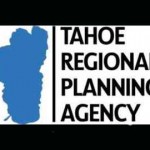Opinion: TRPA board believes in Regional Plan
By Shelly Aldean and Casey Beyer
As chair and vice chair of the Governing Board of the Tahoe Regional Planning Agency, we are no strangers to negotiation and compromise. While the serene beauty of Lake Tahoe often can calm even the most agitated bystander, finding compromise over land use policies at this bi-state lake has never been easy.
 Yet just four months ago, we witnessed a revival of cooperation when tough negotiations and hard-fought compromises successfully produced an updated Lake Tahoe Regional Plan. Despite unprecedented levels of support for the plan, activity in the California and Nevada legislatures have spurred questions about the future of the lake and the TRPA.
Yet just four months ago, we witnessed a revival of cooperation when tough negotiations and hard-fought compromises successfully produced an updated Lake Tahoe Regional Plan. Despite unprecedented levels of support for the plan, activity in the California and Nevada legislatures have spurred questions about the future of the lake and the TRPA.
While the states sort out their differences about the lake’s future through the legislative process, the members of the TRPA Governing Board, who represent the interests of both states, continue to work collaboratively to implement the newly updated Regional Plan. This new plan is the child of compromise and represents a new era of public-private cooperation. After years in the making with thousands of hours of stakeholder input, this new blueprint for the future deserves a chance to succeed.
The compromises that underpin the plan are reflected in the details. While maintaining the strict growth control system that’s been in effect since 1987, the plan is projected to eliminate 10,000 vehicle miles traveled annually in the Tahoe basin. Approximately 27,000 parcel owners will be able to access incentives to install stormwater infiltration measures while at the same time the plan cuts the rate of residential grown allocations in half and anticipates an additional 1,200 private parcels will be protected or restored.
The intent of this updated bi-state regulatory system is to accelerate environmental gains while at the same time helping to improve the health of our communities. In this era of diminishing public sector revenues, the salvation of the environment may well depend on our ability to encourage private investment in ecosystem restoration. It is no longer effective to use only a regulatory compliance approach. We must seek new ways to educate and engage the public by forging partnerships with allies and adversaries alike. Aristotle once observed, “A common danger unites even the bitterest of enemies.” In the Tahoe basin that “common danger” is aquatic invasive species, catastrophic wildfire, and uncontrolled runoff from older urban upland areas – it is not the private property owner, the conservationist, or the neighbor down the street. Rather than focusing our energy and precious resources fighting one another we must unite in a common cause: preserving the environment, strengthening the health of the local economy, and maintaining the social fabric of our communities. To do less would be an injustice to those we serve.
As representatives on the Governing Board from both Nevada and California, we remain convinced that preserving the bi-state Compact is the best protection for Lake Tahoe. We believe that to fulfill our responsibilities we must shed the old and tired paradigms of the past and adopt a more progressive and realistic approach to environmental stewardship. We are committed to a more inclusive and collaborative bi-state approach to governance and will lead by example with a renewed commitment to preserve the basin for current and future generations.
Shelly Aldean is Carson City supervisors’ appointee and chair of the Tahoe Regional Planning Agency Governing Board. Casey Beyer is Governing Board vice chair and the California governor’s appointee.


